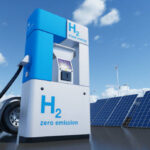As the world moves towards a more sustainable future, battery recycling innovations have become a critical part of the equation. Batteries, especially those used in electric vehicles (EVs) and renewable energy storage, have made a significant impact in reducing carbon emissions and advancing clean energy solutions. However, with the growing adoption of these technologies, the need for efficient recycling methods has never been greater.
Battery recycling is essential to managing the lifecycle of batteries and reducing the environmental impact of the materials used. In recent years, several battery recycling innovations have emerged, aiming to make the process more efficient, cost-effective, and environmentally friendly.
The Importance of Battery Recycling
Every day, millions of batteries are used in a variety of applications, from smartphones to electric cars and renewable energy storage systems. Over time, these batteries degrade and need to be replaced. Improper disposal of used batteries can lead to harmful chemicals leaking into the environment, contributing to soil and water pollution.
By recycling batteries, valuable materials such as lithium, cobalt, and nickel can be recovered and reused in the production of new batteries. This not only reduces the need for mining new raw materials but also helps to decrease the environmental impact of battery manufacturing. With the growing demand for electric vehicles (EVs) and renewable energy solutions, battery recycling innovations are key to creating a circular economy that minimizes waste and reduces our reliance on finite resources.
Innovations in Battery Recycling Technology
Recent advances in battery recycling technology have made the process more efficient and scalable. One of the most significant innovations is the development of closed-loop recycling systems, which allow for the direct reuse of materials from old batteries into new ones. This eliminates the need to extract new raw materials, significantly reducing environmental and energy costs.
Another key development is the improvement of hydrometallurgical processes, which use chemicals to extract valuable metals from used batteries. This method is more energy-efficient and environmentally friendly compared to traditional pyrometallurgical processes, which rely on high heat and can produce harmful emissions. Hydrometallurgy allows for a higher recovery rate of precious metals like lithium, cobalt, and nickel, which are essential for the production of EV batteries.
In addition, mechanical processes have been optimized to help break down battery components efficiently. Advances in automated sorting and shredding technologies allow for faster and more precise separation of battery materials, reducing labor costs and increasing the overall throughput of recycling facilities.
The Role of Battery Recycling in Electric Vehicles
The rise of electric vehicles (EVs) has brought battery recycling innovations to the forefront of the conversation. EVs require large, powerful batteries, which often use rare and expensive materials such as lithium and cobalt. As the number of EVs on the road continues to grow, the need for efficient recycling methods becomes even more critical.
Innovative battery recycling technologies are now being integrated into EV production, helping manufacturers reduce the environmental impact of battery production. For example, some companies are exploring the use of second-life EV batteries in stationary energy storage applications. These second-life batteries, which have been partially degraded from their initial use in vehicles, can still store energy for renewable sources like solar and wind, reducing waste and extending the lifespan of battery materials.
The Future of Battery Recycling
The future of battery recycling innovations looks promising. Researchers are continuously working to develop more efficient and sustainable methods for recycling lithium-ion batteries, as well as exploring new types of batteries that are easier to recycle. One such area of innovation is the development of solid-state batteries, which are expected to be safer, more efficient, and easier to recycle than traditional lithium-ion batteries.
Additionally, the development of recycling infrastructure is vital for ensuring that battery recycling technologies can be deployed at scale. Governments and businesses are investing in new recycling plants and technologies to keep pace with the growing demand for clean energy solutions.
As the world embraces electric mobility and renewable energy, battery recycling innovations will play a crucial role in ensuring these technologies are sustainable in the long term. From closed-loop recycling to advancements in hydrometallurgy, the continued progress in battery recycling technology will help minimize environmental impact, reduce the need for raw material extraction, and contribute to a circular economy. By supporting and investing in these innovations, we can ensure that the future of energy storage is cleaner, greener, and more sustainable.




